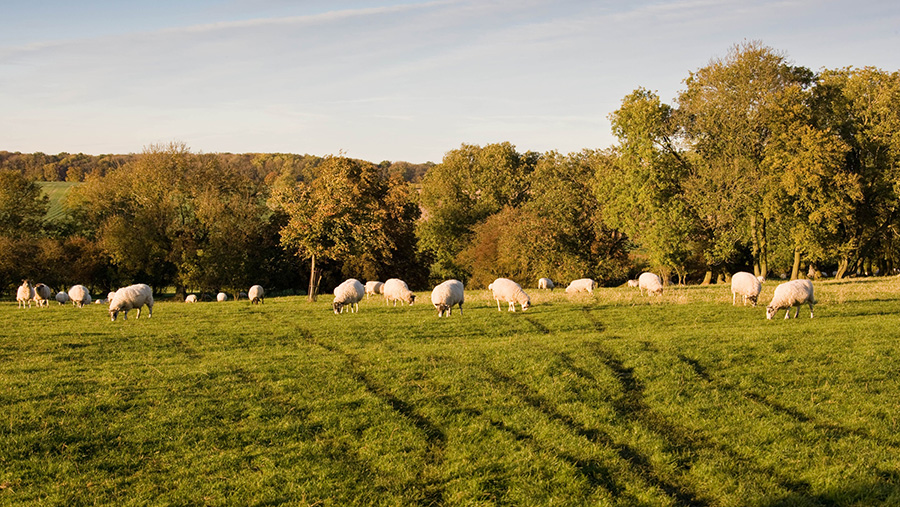Remove silage aftermath now to avoid spoilage
 © Tim Scrivener
© Tim Scrivener Dairy farmers are advised to remove aftermath from silage fields by grazing sheep or mowing to reduce aerobic spoilage in conserved forage they make this year after the warmest December on record.
“Once again the winter has been extremely mild and grass has just kept growing,” says independent forage consultant David Davies from Silage Solutions.
“December 2015 was the warmest December since records began in 1910, with an average temperature of 7.9C – making it feel more like April than early winter.
“It was also the wettest month in the UK for more than a century.
“As a result, there is a lot of grass aftermath about, but plenty of wet, dead material is caught up with it too that’s likely to contain high levels of yeasts and fungi.
“And more rainfall over the next few weeks will only increase soil splash up to the leaves, increasing the level of undesirable microbes still further.”
See also: Guide to assessing your silage clamp for costly losses
Dr Davies says the threat of mould growth in forage clamps and in other stored feeds will only get worse if mild temperatures and significant rainfall continue until the end of the winter.
Remove aftermath
He is advising farmers to remove the aftermath by grazing sheep or mowing, if at all possible.
Tips to mitigate aerobic spoilage
- Mow grass when it is dry
- Aim for a stubble height of 7-10cm
- Spread the crop immediately after mowing to encourage wilting
- Don’t leave a thick, dense sward – this is the perfect environment for mould
“Many dairy farmers don’t like taking sheep on tack, but these grazers really are the best animals for cleaning up the sward in the winter.
“Essentially, you’ve got two options: either leave the aftermath – which means you run the risk of producing poor quality silage – or remove it, either by mowing it off and wasting it, or bring the sheep in.”
Clamp management
If neither option is practical, Dr Davies says many farmers will have to focus on excellent clamp management this year.
“When clamping silage to reduce the risk of spoilage and potential mycotoxin contamination, the aim is to remove as much air from the grass as quickly as possible,” says.
See also: Advice for farmers feeding wet silage to dairy cows
“Fill the clamp in layers no more than 15cm deep at a time and compact as you go.
“Your target should be 750kg/cu m of fresh material [about 250kg dry matter]. Unfortunately, most farms are only reaching 650kg/cu m or less, which means too much oxygen is left with the grass, increasing the chance of aerobic spoilage and moulds, and then potential mycotoxin contamination,” he says.
Dr Davies also adds farmers with a lot of aftermath who are concerned about the risk of aerobic spoilage must use an appropriate silage additive.
“Ideally use a homo-fermentative inoculant, plus a chemical additive, or a chemical (salt) alone.
“The inoculant will improve the fermentation and the additional salt reduces aerobic spoilage. This will help stabilise the clamp,” he adds.
